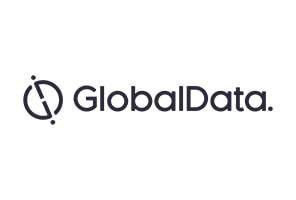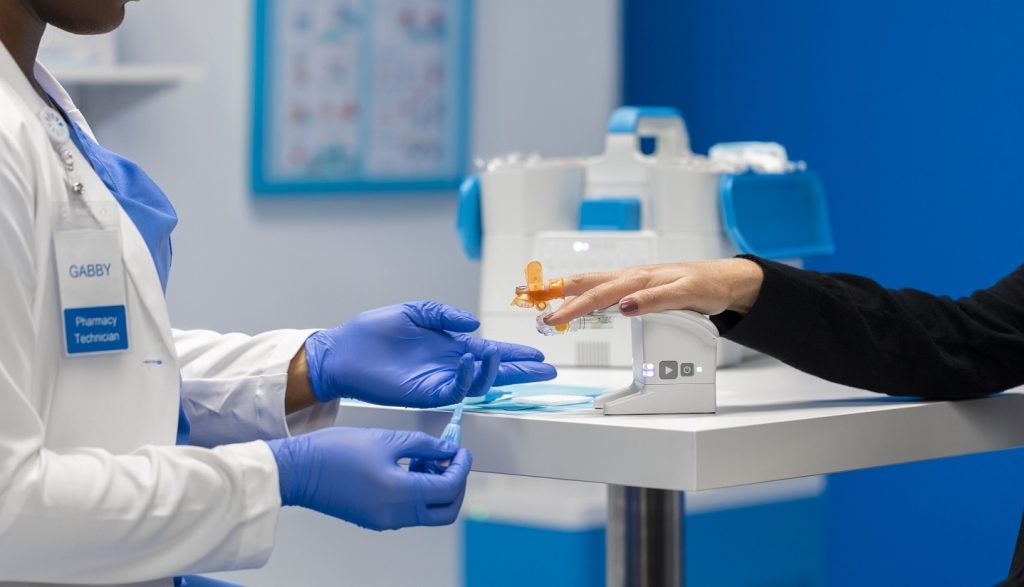
Polymerase chain reaction (PCR) testing technology is growing at a rapid pace within the in vitro diagnostic market; according to GlobalData, the market is increasing at a robust Compound Annual Growth Rate of 10.5%.
Ever since its conception in the 1980s, PCR technology has increasingly become vital in diagnosing infectious diseases and genetic disorders. The market has immense room for growth as diagnostic technologies advance; new research at Stanford University recently employed the technology to diagnose metabolic and skeletal disorders in nine at-risk pregnancies where the fetuses were affected.
First, what is PCR testing? PCR protocol involves amplification of DNA and RNA utilising thermocycler systems. PCR testing can be segmented into conventional PCR testing, real-time PCR (qPCR), and digital PCR (dPCR).
Each PCR method works in a unique manner: conventional PCR measures the amount of PCR accumulated at the end of the PCR cycle, while qPCR measures PCR product as it occurs. The most advanced PCR method is dPCR, as it measures the fraction of negative replicates to determine absolute copies.
Detecting abnormalities
In layman’s terms, dPCR has the ability to find the needle in the haystack in regards to any abnormalities within the sample; an example of the diagnostic prowess of dPCR methods is the ability to detect minute amount of cancer cells present within a blood sample.
Advantages of dPCR include the capability to analyse complex mixtures, in addition to providing a linear response to the number of copies distinguished with fluorescence to allow for small-fold change differences to be detected.
How well do you really know your competitors?
Access the most comprehensive Company Profiles on the market, powered by GlobalData. Save hours of research. Gain competitive edge.

Thank you!
Your download email will arrive shortly
Not ready to buy yet? Download a free sample
We are confident about the unique quality of our Company Profiles. However, we want you to make the most beneficial decision for your business, so we offer a free sample that you can download by submitting the below form
By GlobalDatadPCR testing results in nucleic acid detection and quantification through DNA amplification similar to PCR methods. The components utilised in the reaction are the same for PCR and dPCR; however, the unique aspect of dPCR testing is that the sample mix is partitioned into a large number of individual wells.
dPCR assumes that the sample partitions will follow a Poisson distribution, resulting in either a 0 or 1 target within the well, which allows for the calculation of an absolute number of targets present in the original sample. The presence of fluorescence in the amplified reaction denotes as positive, indicating presence of DNA, while the absence of fluorescence in the reaction denotes as negative.
dPCR is valuable in applications requiring high sensitivity, accurate and reproducible quantification, and improved multiplex capabilities. Similarly, droplet digital PCR (ddPCR) are dPCR tests; however, the sample is partitioned into 20,000 droplets, only the preparation method of ddPCR differs from dPCR. There are a number of indications for which ddPCR is employed, including detection of rare alleles and viral load in specified samples.
Recently, researchers at Stanford University have developed a ddPCR that can be used to prenatally screen for inherited rare diseases by utilising the noninvasive test for recessive single-gene disorders. The new test developed by Stanford could accurately classify affected fetuses by screening cell-free DNA in maternal blood.
Increasing dPCR adoption
As research initiatives continue to develop, the market is likely to see higher adoption of dPCR and ddPCR methods, moving away from conventional PCR. Moreover, in October, the National Measurement Institute of Australia developed and released reference material that can be applied to check the behaviour of each well in a 96-well dPCR format. The reference material allows for reproduction while ensuring quality control within testing.
As newer formats of dPCR are developed, testing for diseases including rare ailments will be easier for health practitioners, allowing them to make accurate and timely decisions. Furthermore, the dPCR has unprecedented levels of precision, accuracy, and resolution in quantification of nucleic acids; coupled with the development of affordable instrumentation, the method is becoming common in the diagnostic testing space.
dPCR and ddPCR tests are going to be at the forefront of molecular testing within the near future as the industry moves towards increased specificity for infectious and genetic diseases. The adoption rate of dPCR is increasing within the in vitro diagnostic market significantly, and is coupled with numerous potential growth opportunities with the advancements in technology readily available.





Related Company Profiles
Stanford University